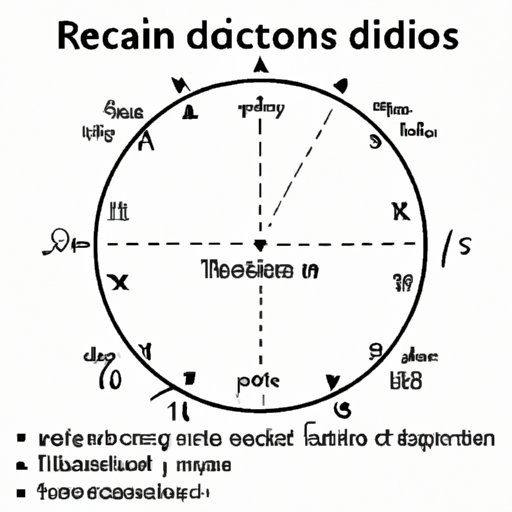
Introduction
If you have ever studied math or trigonometry, you have probably come across the need to convert degrees into radians. It can seem confusing at first, but it is actually a straightforward process. This article will provide a step-by-step guide on how to convert degrees to radians, an infographic to help visualize the conversion, a video tutorial, practice problems, and common mistakes to avoid.
Step-by-Step Guide
A radian is a unit of measurement of an angle that is equal to the length of the arc of the circle that is subtended by that angle. One radian is equal to approximately 57.3 degrees. It is useful to convert between degrees and radians when working with circular or angular motion, or when dealing with trigonometric functions.
Now, let’s convert degrees to radians:
- Identify the number of degrees you want to convert. For this example, let’s say we want to convert 45 degrees into radians.
- Multiply the number of degrees by pi/180 (π/180). For 45 degrees, the calculation would be: 45 x π/180 = 0.785 radians.
- Your final answer should be in radians. So, 45 degrees is equal to 0.785 radians.
It is important to double-check your work to ensure that you have converted correctly. Additionally, if you are given an answer in radians and need to convert it to degrees, simply multiply the number of radians by 180/π.
Infographic
Our infographic presents the conversion of degrees to radians visually. This helps in understanding the tonality concept, and people who prefer visual learning will find this helpful.

Video Tutorial
Our video tutorial aims to help viewers better understand the steps and process of converting degrees to radians. Follow the graphical illustrations and whiteboard as the instructor demonstrates the process with added voiceover explanations.
Practice Problems
Practice makes perfect, and the same goes for converting degrees to radians. Here are some practice problems for you to work on:
- Convert 60 degrees to radians.
- Convert 120 degrees to radians.
- Convert 180 degrees to radians.
- Convert 270 degrees to radians.
- Convert 360 degrees to radians.
Here are the answers:
- π/3 radians
- 2π/3 radians
- π radians
- 3π/2 radians
- 2π radians
Remember, the more practice you do, the more confident you will become in your conversion skills.
Common Mistakes to Avoid
When converting degrees to radians, common mistakes include forgetting to multiply by π/180 or using the wrong formula. It is important to understand the concept behind the formula to avoid these mistakes. Forgetting to convert from degrees to radians or radians to degrees can also cause errors. Always double-check your work and practice to improve your skills.
Conclusion
Converting degrees to radians is a fundamental concept in mathematics and trigonometry. It is a skill that is necessary when working with circular motion or trigonometric functions. This article has presented a step-by-step guide, an infographic, a video tutorial, practice problems, and common mistakes to avoid. With practice, accuracy, and patience, anyone can become proficient in converting degrees to radians.




